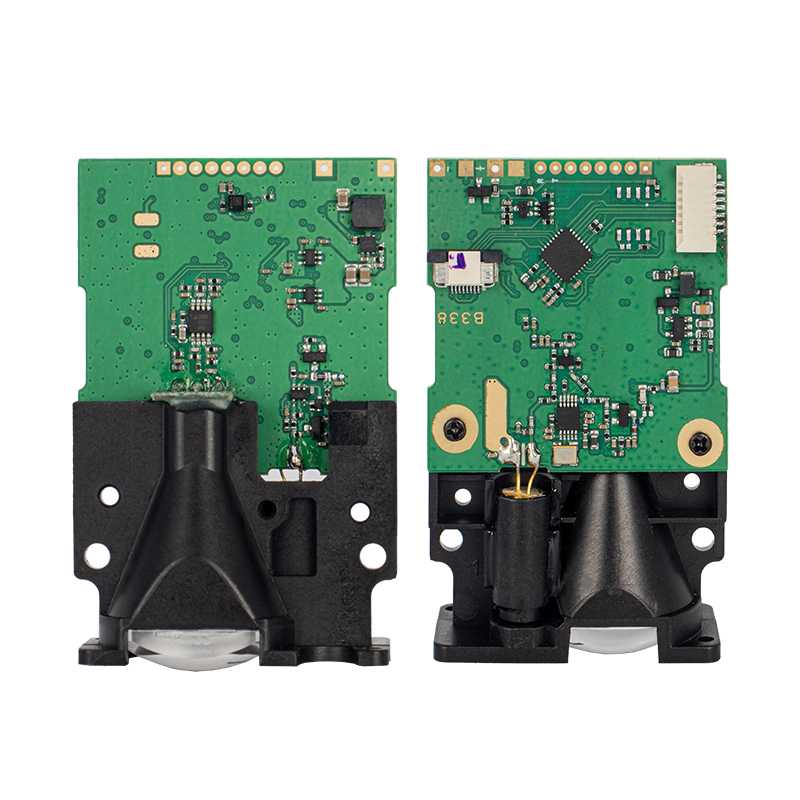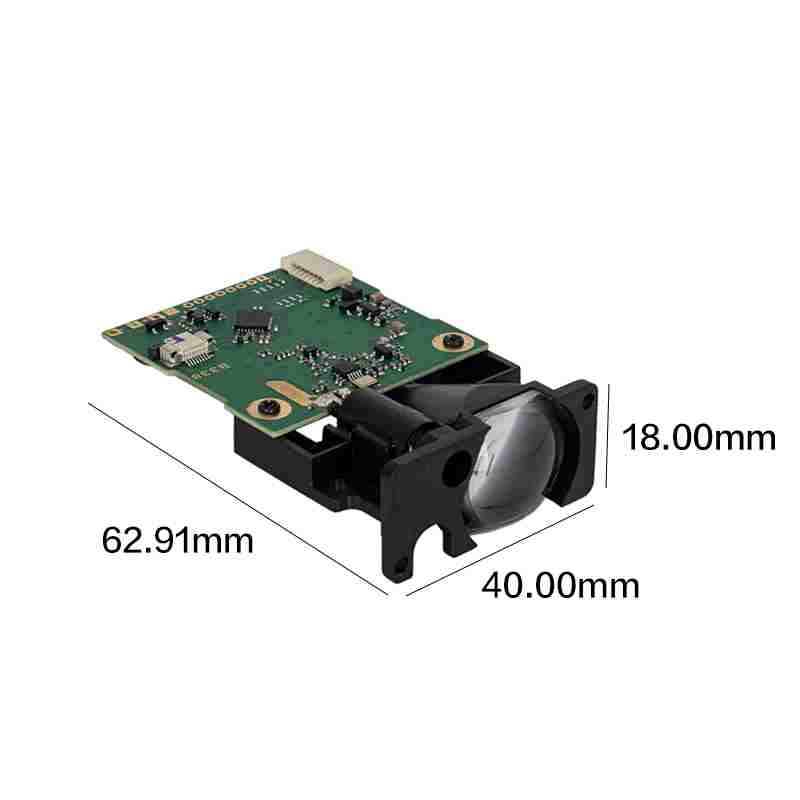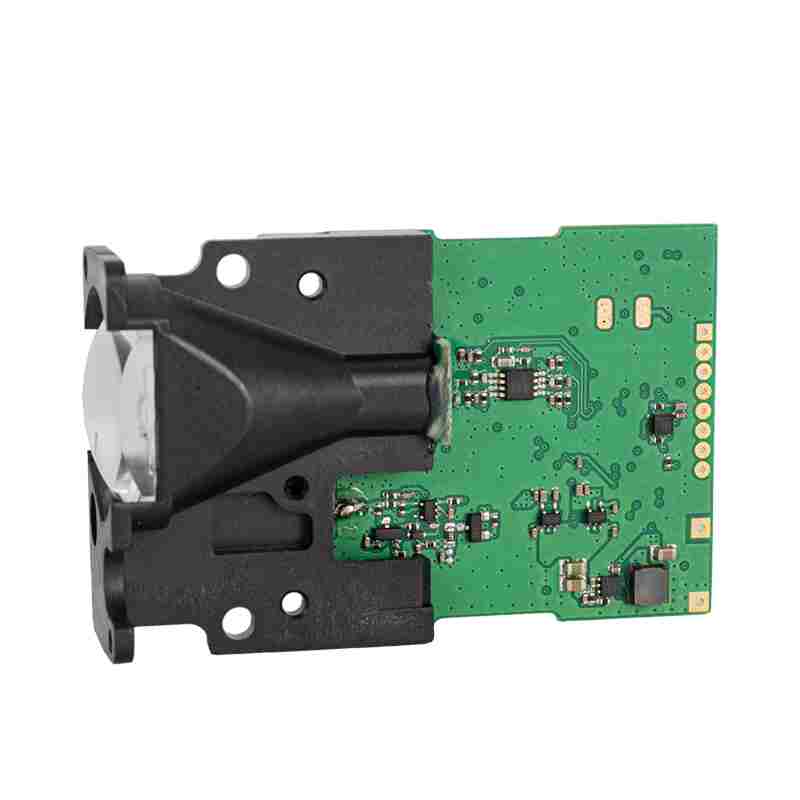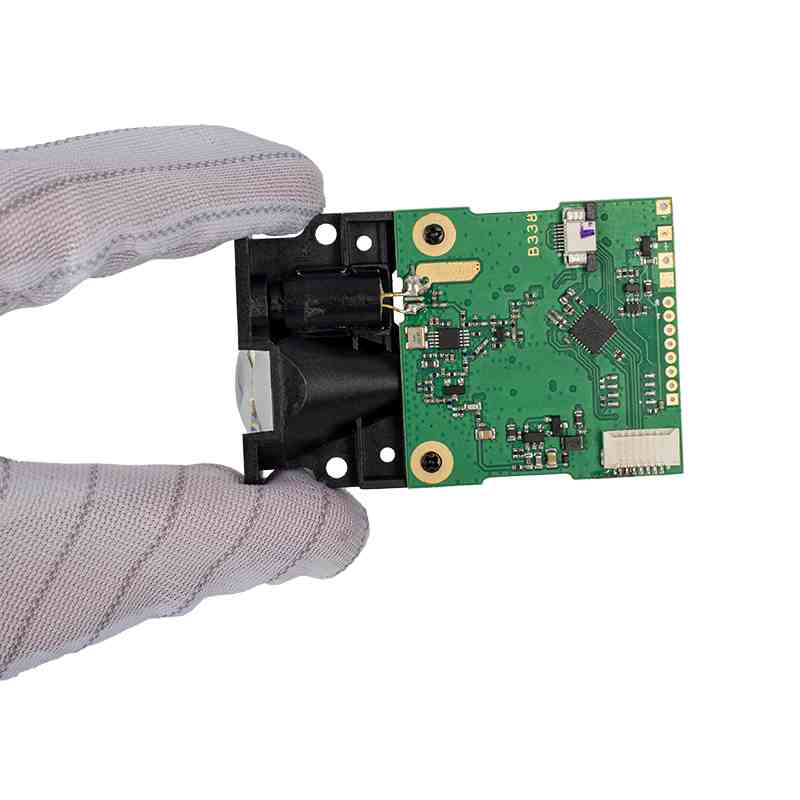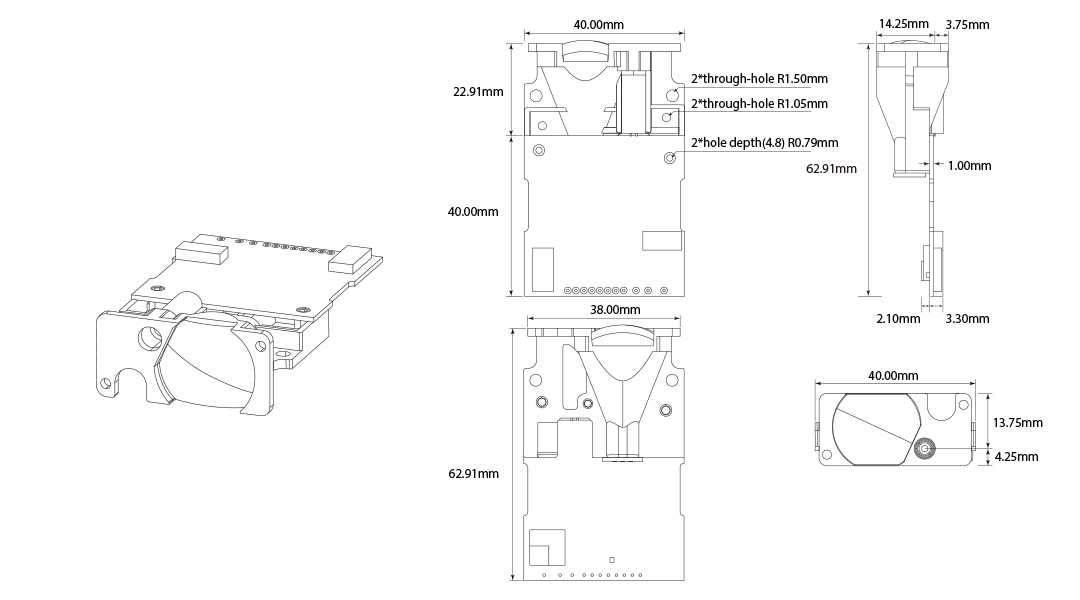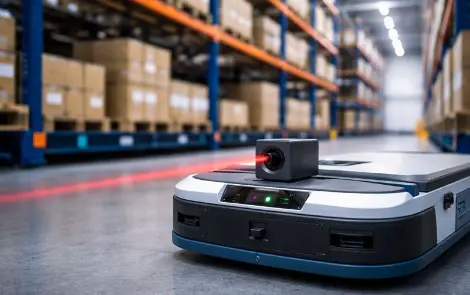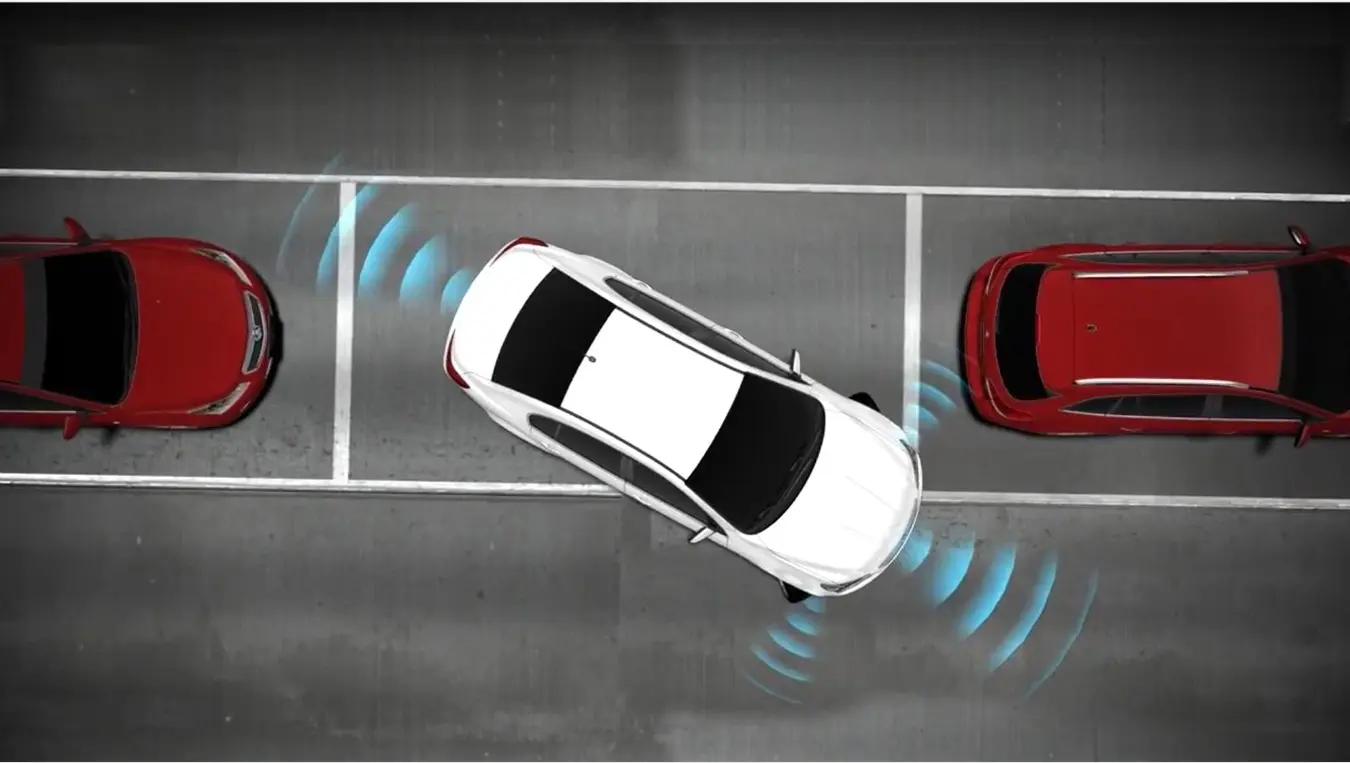-
Capteur laser Arduino 20Hz pour mouvement distance ou Diy
- Le capteur laser Arduino, un module de mesure de distance par laser d'une précision de 1 mm, est un dispositif utilisé pour mesurer la distance entre des cibles et transmettre des données. Il utilise la technologie du laser visible pour émettre des faisceaux laser et recevoir des signaux laser réfléchis afin de mesurer la distance entre les objets et le capteur. Le capteur de distance laser prend en charge des interfaces de communication telles que USB, TTL, RS232, RS485 et Bluetooth, ce qui permet la transmission de données et la communication avec d'autres appareils.
- 1. le module Meskernel répond rapidement avec une grande précision et une longue portée de mesure
- 2. Nous sommes présents sur cette ligne laser depuis plus de 20 ans et sommes le principal fournisseur de modules de télémètres/capteurs laser en Chine.
- 3. 30m, 40m, 60m, 80m, 100m, 120m, 150m, chaque distance peut être multifonctionnelle.
- 4. La tension peut être modifiée par le convertisseur de puissance LDO.
- 5. Température de fonctionnement -10 ℃~50 ℃ personnalisable
- 6. Les données analogiques peuvent être personnalisées.

Capteur laser Arduino Caractéristiques principales :
- Options de grande distance
Large gamme de distances sélectionnables, ce qui permet de l'utiliser pour diverses applications. - Vitesse de réponse rapide
Capacités d'acquisition rapide des données, permettant d'effectuer des mesures de distance en quelques millisecondes. - Interfaces de communication multiples
La prise en charge de diverses interfaces et protocoles de communication, notamment RS232, RS485, Bluetooth, Modbus et UART, facilite l'intégration avec les systèmes de contrôle ou de données existants. - Haute précision de mesure
Avec une précision de l'ordre du millimètre, ce capteur répond aux exigences de haute précision d'applications telles que la géodésie et l'ingénierie de la construction. - Des performances stables
Le capteur maintient une plage étroite de fluctuations de données et présente une faible erreur de répétabilité. - Mesure sans contact
Le capteur est capable d'effectuer des mesures sans contact et convient à la détection d'objets en mouvement, d'objets à haute ou basse température, de liquides et d'objets de forme irrégulière.
L'utilisation d'un capteur laser avec un Arduino peut être un excellent moyen de détecter des distances, de mesurer une position ou de détecter des objets. Généralement, les capteurs laser utilisés avec Arduino peuvent être des télémètres laser (pour mesurer la distance) ou des détecteurs laser (pour détecter la présence d'un point laser). Ci-dessous, je vous guiderai à travers la configuration générale des capteurs laser, en me concentrant plus particulièrement sur la façon d'interfacer un capteur de distance laser avec un Arduino, car c'est l'un des cas d'utilisation les plus courants.
Comment utiliser le capteur laser Arduino ?
1. Capteur de distance à laser (par exemple, Lidar, capteur laser LDJ)
Le capteur LDJ Laser Sensor Time-of-Flight (ToF) est un capteur laser très répandu pour la mesure des distances. Il s'agit d'un capteur compact et peu coûteux qui utilise la lumière laser pour mesurer la distance d'un objet.
Composants nécessaires :
- Carte Arduino (par exemple, Uno, Mega, Nano)
- LDJ Module de capteur laser
- Fils de connexion
- Planche à pain (facultatif)
Câblage du capteur laser LDJ :
Le capteur laser LDJ communique avec l'Arduino en utilisant le protocole I2C, ce qui signifie que vous devrez connecter le capteur aux broches SCL et SDA de votre Arduino.
Pour un Arduino Uno :
- GND (capteur) à GND (Arduino)
- VCC (capteur) à 5V (Arduino)
- SDA (capteur) à A4 (Arduino Uno)
- SCL (capteur) à A5 (Arduino Uno)
Si vous utilisez un autre modèle d'Arduino, vérifiez les broches I2C (SCL/SDA) de cette carte.
Plate-forme logicielle de test pour capteur laser Arduino
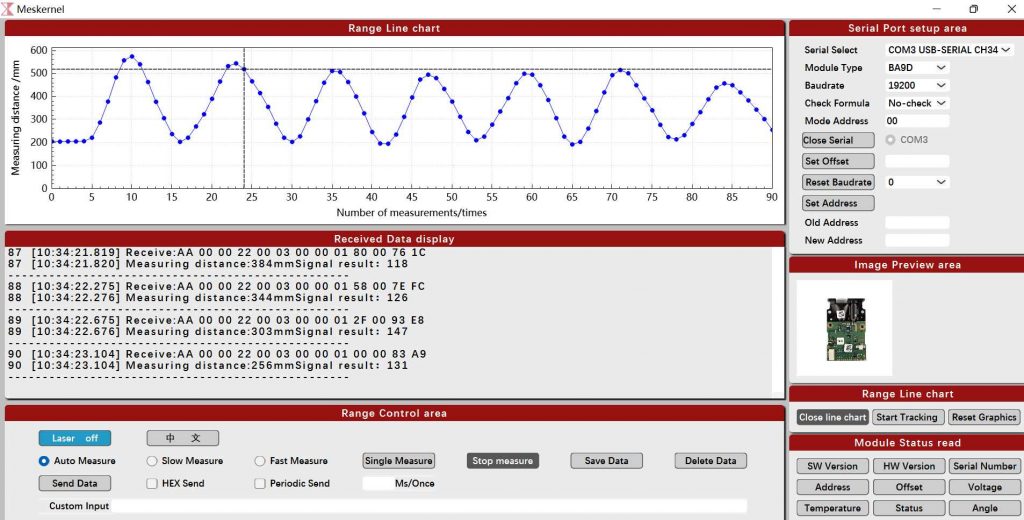
Pourquoi nous choisir ?
En tant que fabricant OEM de confiance, nous sommes spécialisés dans la fourniture de capteurs laser industriels de haute qualité avec des solutions personnalisées pour répondre à vos exigences spécifiques. Nos options de personnalisation vous permettent d'adapter les configurations de capteurs à vos besoins opérationnels, tandis que nos prix OEM garantissent des solutions à des coûts compétitifs pour les grandes et les petites entreprises. Notre équipe d'experts travaillera en étroite collaboration avec vous, de la consultation à la post-installation, afin de s'assurer que votre système de capteurs laser industriels est optimisé pour vos besoins uniques.

